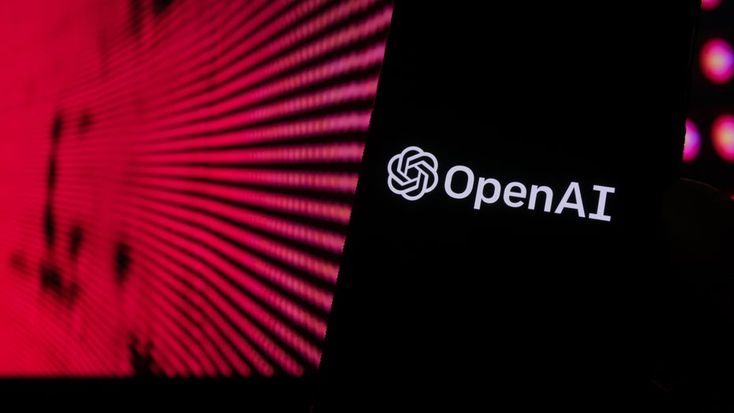Since OpenAI DevDay 2025, one message has become clear — ChatGPT is no longer just a conversational interface; it’s an integration layer. With the introduction of ChatGPT Apps and SDKs, AI is evolving from an isolated productivity tool into an enterprise ecosystem capable of embedding itself into CRMs, ERPs, and HR systems.
For enterprise leaders, this marks a shift from “experimenting with AI” to operationalizing it at scale. At DXTech, we see this evolution as the next logical step in becoming a Top AI Builder: transforming fragmented workflows into unified, intelligent systems that learn and adapt across departments.
1. From Chat to Core: What ChatGPT Apps Really Mean for Businesses
At DevDay, OpenAI unveiled ChatGPT Apps — allowing developers and organizations to extend the platform with their own logic, tools, and integrations.
For enterprises, this isn’t just a technical upgrade. It’s a blueprint for ecosystem-driven AI:
- From silos to synergy: Instead of deploying different AI bots for each department, ChatGPT Apps allow unified access to company-wide systems.
- From conversations to commands: Sales teams can query CRM data, HR can automate onboarding, and Finance can retrieve budget insights — all in one chat interface.
- From static workflows to adaptive ones: As models learn from company-specific contexts, they tailor recommendations and automate decision-making.
According to McKinsey’s State of AI 2024 report, companies that integrate AI across business units (rather than keeping it isolated) see 2.5x higher ROI on digital transformation efforts. ChatGPT Apps now make that cross-department integration technically feasible — but only if paired with the right architecture.

2. The Pain Point: Fragmentation in Enterprise AI
Before DevDay, most enterprise AI projects faced three recurring challenges:
- Disjointed systems — CRMs, ERPs, and HR tools running on separate architectures.
- Manual bridges — employees still switching between dashboards or exporting data by hand.
- Low adaptability — AI pilots that couldn’t evolve beyond narrow use cases.
The result: AI remained a bolt-on, not a backbone.
Enterprises were using AI to analyze data, not activate it.
DXTech addresses this by designing interoperable ecosystems, where ChatGPT becomes the single conversational layer that sits on top of the enterprise tech stack. Instead of building dozens of one-off AI assistants, we enable one intelligent interface that adapts to multiple domains — securely and contextually.
3. How ChatGPT Apps Connect the Enterprise Ecosystem
3.1 CRM: Smarter Sales & Customer Insights
Imagine a sales manager asking ChatGPT:
“Show me leads from last quarter with low engagement but high lifetime value.”
Behind the scenes, ChatGPT calls the CRM API, retrieves data, and recommends next steps – without the user ever leaving chat. This is AI-assisted decision-making, not just data retrieval.
3.2 ERP: Real-Time Operational Awareness
For operations teams, ChatGPT Apps can plug into ERP systems to monitor inventory, logistics, and resource allocation. When integrated properly, AI becomes the control tower – detecting anomalies, suggesting adjustments, or generating purchase orders automatically.
3.3 HRM: Personalized Employee Experiences
In HR, ChatGPT Apps enable employees to interact with internal systems conversationally:
“Request annual leave,” “Find my training schedule,” or “Summarize my last performance review.”
When integrated with policy-based governance, this creates human-centered automation — improving experience without compromising compliance.
4. The Governance Imperative: Security and Control in the AI Ecosystem
With new power comes new risk. The more ChatGPT connects with business data, the more critical governance becomes.
Enterprises must ensure:
- Data isolation between teams and systems
- Permission-based access for sensitive operations
- Audit trails to track every AI-generated action
- Compliance alignment with data regulations (GDPR, ISO 27001, etc.)
At DXTech, governance is never an afterthought. Our frameworks embed monitoring, traceability, and fail-safes directly into the deployment process. This ensures that every API call, prompt, and recommendation remains auditable, explainable, and secure.
5. Why This Matters Strategically for Enterprises
5.1 AI as an Infrastructure Layer
ChatGPT Apps represent a mindset shift: AI is no longer a feature – it’s infrastructure. Businesses that master AI integration across their systems will gain a sustainable edge in speed, accuracy, and decision intelligence.
5.2 Shorter Time-to-Value
With modular integration (through APIs and SDKs), enterprises can scale AI across multiple domains faster, without costly rewrites. Gartner estimates that modular AI deployments cut time-to-value by up to 40% compared to monolithic implementations.
5.3 Building a Scalable Ecosystem
The ultimate goal is not one chatbot per department — it’s a unified AI fabric that connects the organization. That’s the difference between adopting AI and becoming an AI-driven enterprise.
6. How DXTech Enables This Transformation
DXTech’s AI Builder approach ensures that enterprise clients don’t just adopt ChatGPT — they own their AI ecosystem.
We provide:
- Modular AI frameworks: Easily plug ChatGPT Apps into CRM, ERP, or HR systems.
- Custom connectors: Securely bridge legacy data pipelines to modern AI models.
- Governance layer: Role-based permissions, compliance logging, and usage dashboards.
- Continuous optimization: Monitoring and fine-tuning based on performance feedback.
Our goal is to make AI deployment as seamless as SaaS adoption, but with enterprise-grade security and scalability.
Building the Next AI Ecosystem
The OpenAI DevDay announcements signal more than new tools — they define the foundation for the next enterprise operating model. ChatGPT Apps show how AI can move from being a stand-alone assistant to an intelligent layer connecting every business function.
For enterprises ready to evolve, DXTech helps turn these possibilities into reality: building cohesive, governed, and future-ready AI ecosystems. Because in the next decade, competitiveness won’t come from having AI — it will come from how deeply AI is connected.